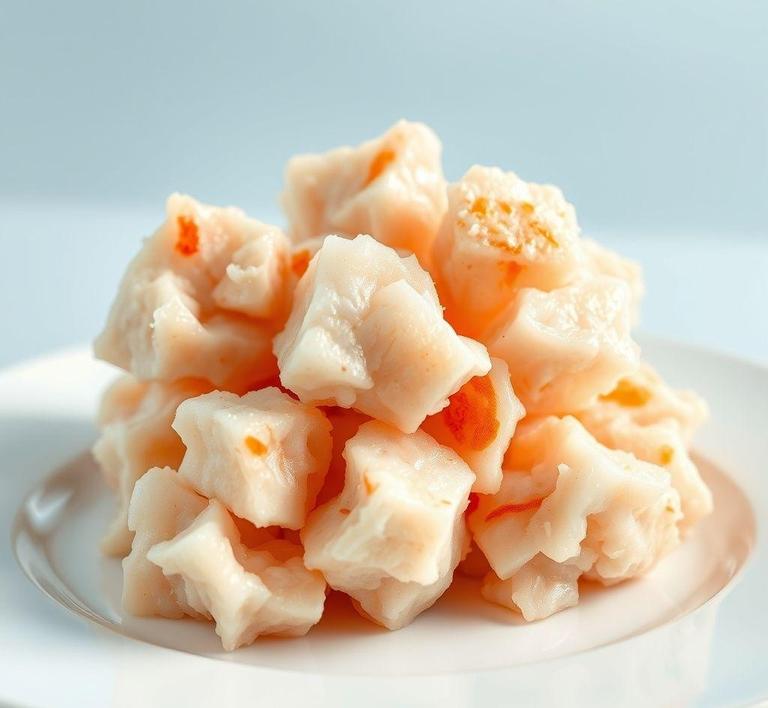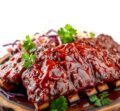Refreezing lump crab meat can be a bit tricky, but with the right techniques, you can preserve its freshness for later use. Whether you’ve bought too much or have leftovers from a delicious seafood feast, knowing how to refreeze it properly will help maintain its delicate texture and flavor. Crab meat, especially lump crab, is prized for its sweet and tender quality, so ensuring that it’s stored the right way will prevent it from becoming mushy or losing its taste. This guide will walk you through the best practices for safely refreezing lump crab meat, from preparation to storage tips, so you can enjoy it just as much the second time around!
Can You Refreeze Lump Crab Meat?

The short answer is: yes, you can refreeze lump crab meat-but with caution and under very specific conditions. Lump crab meat, known for its large, tender, and flavorful pieces of white meat harvested from the body of the crab, is a prized ingredient in gourmet dishes. Its delicate texture and subtle briny sweetness make it especially susceptible to changes in moisture and texture during freezing and thawing cycles.
Refreezing lump crab meat is only safe if it has been thawed properly in the refrigerator and has not been left at room temperature for more than two hours. If the crab meat was previously thawed using quicker methods, like in the microwave or under cold running water, and especially if it was left exposed to temperatures in the "danger zone" (between 40°F and 140°F), refreezing is not recommended. In such cases, bacteria may have already started to grow, posing a potential food safety risk.
So, while refreezing is technically possible, it is a conditional practice that requires careful consideration of how the crab meat was handled post-thaw.
How To Refreeze Lump Crab Meat?
If you’ve decided to refreeze your lump crab meat and are sure that it was thawed safely in the refrigerator, follow these detailed steps to do it correctly:
-
Inspect the Crab Meat:
Start by closely examining the crab meat. Look for any signs of spoilage such as an off-odor, discoloration, or a slimy texture. High-quality crab meat should smell slightly sweet and salty, not sour or fishy.
-
Drain Excess Moisture:
Gently pat the crab meat dry with paper towels. Excess moisture can cause ice crystals to form during refreezing, which damages the delicate structure of the meat and leads to mushy texture upon re-thawing.
-
Portion Properly:
Divide the crab meat into meal-sized portions. This helps minimize future refreezing and thawing cycles, which would further degrade the quality.
-
Use Airtight Packaging:
Wrap the crab meat tightly in plastic wrap or aluminum foil, then place it inside an airtight freezer bag or vacuum-sealed pouch. Remove as much air as possible to prevent freezer burn and preserve the meat’s flavor and texture.
-
Label and Date:
Clearly label the package with the date of refreezing. Refrozen lump crab meat should ideally be used within 1 to 2 months for best quality.
-
Freeze Quickly:
Place the packaged crab meat in the coldest part of your freezer, ideally at 0°F (-18°C) or lower. The quicker the meat freezes, the better the texture preservation.
Quality Impact
Even when all safety measures are followed, refreezing lump crab meat will inevitably impact its quality. Crab meat is particularly sensitive to ice crystal formation. Each freezing cycle contributes to the breakdown of cellular structure, causing the meat to become watery, grainy, and less flavorful upon thawing.
Here are the most common quality degradations:
- Texture Loss: The most noticeable effect is a change in texture. Instead of the firm, chunky pieces associated with fresh lump crab meat, refrozen crab meat often turns soft or mushy after thawing.
- Flavor Degradation: The subtle sweetness and briny nuances may diminish. Freezing dulls these notes, and any moisture loss can further strip the meat of its characteristic taste.
- Increased Risk of Freezer Burn: Without proper packaging, the meat is vulnerable to freezer burn-a condition that desiccates the surface and imparts an off flavor.
- Reduced Shelf Life: Refrozen crab meat will not last as long in the freezer as crab meat frozen only once. While a single freeze can retain quality for up to 3-6 months, refrozen meat should ideally be used within a couple of months.
Refreezing lump crab meat is a practice best approached with care and understanding. It is technically safe-provided the meat was thawed in the refrigerator and handled hygienically. However, even with ideal handling, the quality of the meat will almost certainly decline upon refreezing.
If you find yourself with leftover lump crab meat, consider repurposing it into cooked dishes like crab cakes, casseroles, or bisques before refreezing. Cooking the crab first can help preserve its integrity and flavor, as cooked crab meat tends to fare better in the freezer than raw.
Ultimately, when it comes to premium seafood like lump crab, the golden rule remains: freeze once, thaw once, and savor every bite. This ensures you experience the meat in its finest form-succulent, fresh, and delicious.
Is It Safe To Refreeze Lump Crab Meat?
Lump crab meat, prized for its delicate, sweet flavor and tender texture, is a gourmet delicacy often reserved for special dishes. However, handling it improperly can turn this ocean treasure into a food safety hazard. One of the most common concerns arises after thawing: is it safe to refreeze lump crab meat?
The answer is: it depends.
If lump crab meat was thawed properly-meaning it was defrosted in the refrigerator and has remained at or below 40°F (4°C) the entire time-then yes, it is generally safe to refreeze it. However, every refreezing cycle degrades the texture and flavor. The firm, flaky texture of lump crab may become soft or mushy after being frozen and thawed more than once, even if it remains microbiologically safe to eat.
Crab meat that was thawed using quicker, less controlled methods such as leaving it on the countertop or using warm water should never be refrozen. These methods expose the meat to the "danger zone" (40°F to 140°F), where bacteria like Listeria or Salmonella thrive. Once crab has been in that zone for more than two hours, it should be cooked immediately or discarded-refreezing it is not an option.
Signs That Lump Crab Meat Should Not Be Refrozen
Before deciding to refreeze, assess the quality and safety of the crab meat. Look for these telltale signs that your lump crab should not be refrozen:
-
Off Odor:
Fresh lump crab meat should smell faintly of the ocean-briny, sweet, and clean. If you detect any sour, ammonia-like, or rotten odor, the crab has spoiled. This is a clear indication that it should not be refrozen or eaten.
-
Slimy or Sticky Texture:
While crab meat naturally contains some moisture, it should not feel slimy, sticky, or overly mushy. A slick film on the surface indicates bacterial growth or decomposition.
-
Discoloration:
Fresh lump crab should be white or slightly off-white with hints of pink or light brown. Dark spots, yellowing, or dull gray tones suggest oxidation or bacterial spoilage. Blackened edges are a definitive no-go.
-
Time at Room Temperature:
If the meat has been left out at room temperature for more than 2 hours-or even just 1 hour if ambient temperatures are 90°F (32°C) or higher-it’s no longer safe. Even if it looks and smells fine, invisible bacterial growth makes it unsafe to refreeze or consume.
-
Previously Cooked or Mixed:
If the crab has already been incorporated into a dish-like a crab salad, crab cakes, or a cooked entrée-you should not refreeze it. The combination with other ingredients makes temperature control more difficult and spoilage more likely.
Common Refreezing Mistakes
Even well-intentioned home cooks can make mistakes when trying to salvage expensive seafood. Here are the most frequent refreezing pitfalls and how to avoid them:
-
Thawing at Room Temperature:
Leaving crab meat on the counter to thaw rapidly invites bacterial contamination. Always thaw in the refrigerator, in a sealed container to avoid cross-contamination with other foods.
-
Repeated Freezing and Thawing Cycles:
Constantly moving crab meat from freezer to fridge and back compromises both safety and quality. Each freeze/thaw cycle causes ice crystals to form, breaking down the meat’s cellular structure. This results in watery, mushy crab and a dull, lifeless flavor.
-
Not Labeling and Dating:
It’s easy to forget when something was thawed or how long it’s been sitting in the fridge. Always label containers with the date of freezing, thawing, and refreezing if necessary. Lump crab meat should only be kept refrigerated for 1-2 days before using or refreezing.
-
Refreezing Expired Crab:
If crab meat is nearing or has passed its expiration or "use-by" date-even if it appears fine-it should not be refrozen. Bacteria can flourish before any signs of spoilage become evident.
Tips And Tricks
To help you preserve lump crab meat as safely and effectively as possible, here are some pro tips and kitchen-tested tricks:
-
Portion Before Freezing:
Divide crab meat into usable portions before freezing. This prevents you from needing to thaw an entire container when you only need a small amount.
-
Vacuum Seal or Use Airtight Containers:
Minimize exposure to air by vacuum-sealing or tightly wrapping the crab meat in plastic wrap and aluminum foil. For added protection, place it in an airtight freezer-safe container or a resealable freezer bag.
-
Flash Freeze for Better Texture:
If you have the tools, flash freezing crab meat before storing it long-term can help preserve its cellular integrity and prevent mushiness upon thawing.
-
Label Clearly:
Use a permanent marker to label the storage date, thawing date, and any refreezing info. Include a ‘Use By’ date to help keep track of freshness.
-
Use Within 1-2 Months:
Although crab meat can technically last up to 3 months in the freezer, for best flavor and texture, aim to use refrozen crab meat within 1-2 months.
Conclusion
Lump crab meat is a luxury ingredient that deserves careful handling and respect. While it is possible to refreeze it under the right conditions, this should be a backup option rather than a routine practice. Refreezing is safest only when the meat has been thawed properly, has shown no signs of spoilage, and has been kept cold at all times.
By recognizing the warning signs of spoilage, avoiding common handling mistakes, and implementing safe storage practices, you can protect both your health and your investment in high-quality seafood. When in doubt, remember: it’s always better to err on the side of caution. No culinary delight is worth a bout of foodborne illness.


